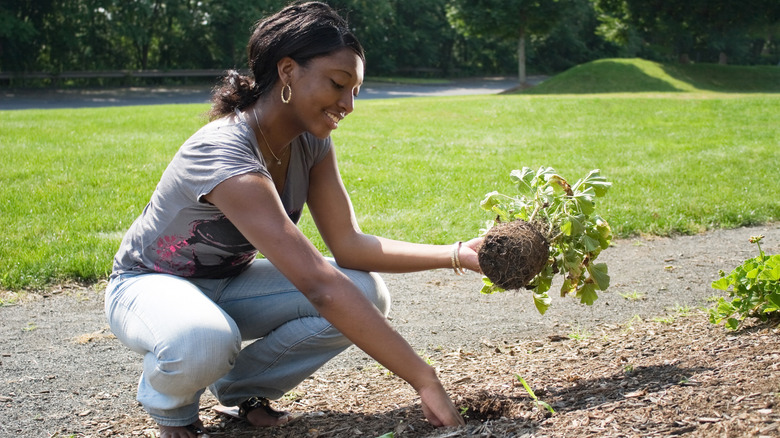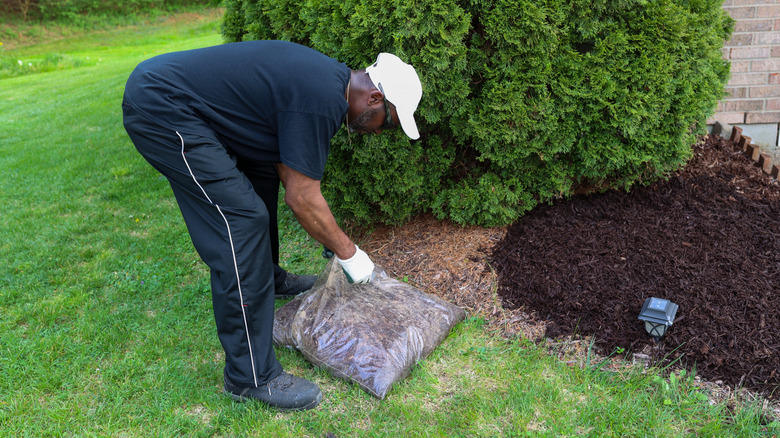We may receive a commission on purchases made from links.
Which came first — the mulch or the plants? As a variation on the old chicken and egg theme, some gardeners mulch after they’ve added plants to their gardens, while others add the mulch first. In either scenario, the garden beds need a little preparation before either the plants or the mulch is added. Once the mulch is in place, it helps the soil retain moisture while suppressing weed growth, regardless of when it was added. The goal either way is to successfully grow plants without harming them even during garden maintenance, so what’s the best way to do that without making
mulching mistakes that are bad for the garden
?
One of the easiest ways to mulch a garden bed without harming the plants is to spread the mulch first, then add the plants. Spreading mulch is a lot faster and easier if you don’t have to work your way around delicate seedlings and small plants. There’s also no chance of accidentally stepping on a freshly planted petunia if you spread mulch before planting, then add the plants starting in the back areas of the flowerbed, working your way towards the front. It’s also easier than slowing down while mulching to carefully cover the areas around freshly planted seedlings, especially if they’re close to one another.
Read more:
Raised Beds Vs. In-Ground Garden Beds: Which Is Overall Better?
How To Mulch Without Harming Plants

Though it’s good to mulch in late spring when the soil is warm and before numerous weeds take root, mulching can be done virtually any time of the year. When you’re ready to mulch, first remove all weeds and debris you find, then wet the soil. The moisture will benefit the plants you add later. If working over a large area, create piles of mulch near the garden bed by emptying the wheelbarrow or mulch bags in handy locations along the edge of the garden.
Then, rake the mulch into the garden, aiming for complete, even coverage. The optimal mulch depth is around 3 inches; in an extremely sunny area, another inch or so helps retain moisture. Applying too much mulch could cause root rot and plant diseases, while too little won’t suppress weeds. Use the back side of a steel-headed garden rake or bow rake, such as this one by
Craftsman
, to smooth out the mulch in the garden. The straight side of the rake head does a great job of leveling mulch and the like, so it’s a
must-have tool for every beginning gardener
. If the garden bed has an ornamental tree in it, requiring you to mulch around it, avoid
this crucial mulching mistake that pertains specifically to trees
.
While watering again is optional once the mulch is in place, the water helps it settle a bit. The fun part is next — choosing locations for your new plants. Set them in place, still in their nursery pots, to determine the ideal layout. Once you’re happy with a planting plan, dig down through the mulch and into the soil deep enough to plant any given seedling. Remove each plant from its pot, squeeze the root structure to loosen it, then set the plant in the hole. Pat the soil around the plant, but don’t cover the stems with mulch. Leave about an inch of space around each plant to let it air out, as wet mulch contributes to plant rot.
Read the
original article on Outdoor Guide
.






